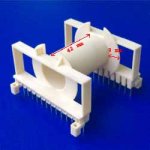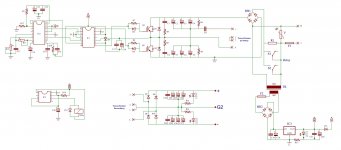+-80V >> 7A
Any of these 3 wires will work for your secondary with just one strand, if they will fit. I got the 1.386" dimension from a etd59 drawing i found on the net, your bobbin will have slightly more or less room.
1.386" winding width on bobbin / 22 total turns = .063" for bundle
11+11 turns of one of these wires.
1.5mm .0590" bare, .0618" dia, 3,487 Cmils
15awg .0571" bare, .0603" dia, 3,256 Cmils
1.4mm .0551" bare, .0578" dia, 3,037 Cmils
Any of these 3 wires will work for your secondary with just one strand, if they will fit. I got the 1.386" dimension from a etd59 drawing i found on the net, your bobbin will have slightly more or less room.
1.386" winding width on bobbin / 22 total turns = .063" for bundle
11+11 turns of one of these wires.
1.5mm .0590" bare, .0618" dia, 3,487 Cmils
15awg .0571" bare, .0603" dia, 3,256 Cmils
1.4mm .0551" bare, .0578" dia, 3,037 Cmils


